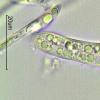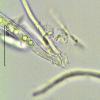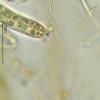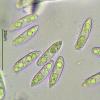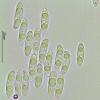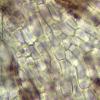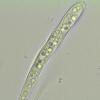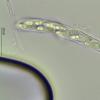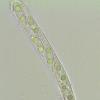
04-11-2025 09:07
Hello.A suspected Hymenoscyphus sprouting on a thi

04-11-2025 12:43
 Edvin Johannesen
Edvin Johannesen
Hi! One more found on old Populus tremula log in O

03-11-2025 21:34
 Edvin Johannesen
Edvin Johannesen
These tiny (0.4-0.5 mm diam.), whitish, short-stip

28-10-2025 15:37
Carl FarmerI'd be grateful for any suggestions for this strik

03-11-2025 16:30
 Hans-Otto Baral
Hans-Otto Baral
Hello I want to ask you if you have found this ye

Hola a todos.
Subo unas fotos de un Hymenoscyphus que hemos encontrado sobre hojas de Laurus.
Miden hasta 2 mm de altura.
Esporas de 15,3-17,9 x 4,2-5,3 micras.
Ascas amiloides, pleurrrincas, de 90-100 x 8-9 micras
Pongo fotos de esporas recién expulsadas y de esporada libre.
¿Qué les parece?
Gracias por sus respuestas.
Rubén


Rubén, las medidas de los ascos que aportas... ¿son en estado vivo o son tomadas de ascos como el que se ve en la segunda foto?
Cheers,
Raúl

Gracias Zotto, Raúl.
Las medidas de ascas son obtenidas de estas fotos, tengo más, pero son similares. No sé distinguir bien si son ascas vivas o no, pero la muestra sí estaba viva y muchas ascas has esporado mientras yo miraba las estructuras en el micro. Igual yo he roto algunas al romper para ver mejor la base pleurorrinca, ya que en esta recolecta no se veía muy bien.
Saludos
Rubén

Saludos,
Raúl

Gracias Raúl
Saludos
Rubén

Living asci are easily recognised, at least when they are fully turgescent and shortly before spore discharge. A pretty example is the Hymenoscyphus of Ruben with 1-septate spores posted recently:
Rubén Martínez Gil, 05-12-2016 00:55
The second and third photo shows fully turgescent asci, much wider and longer than dead asci, with ample water below the regularly arranged spores.
Zotto


